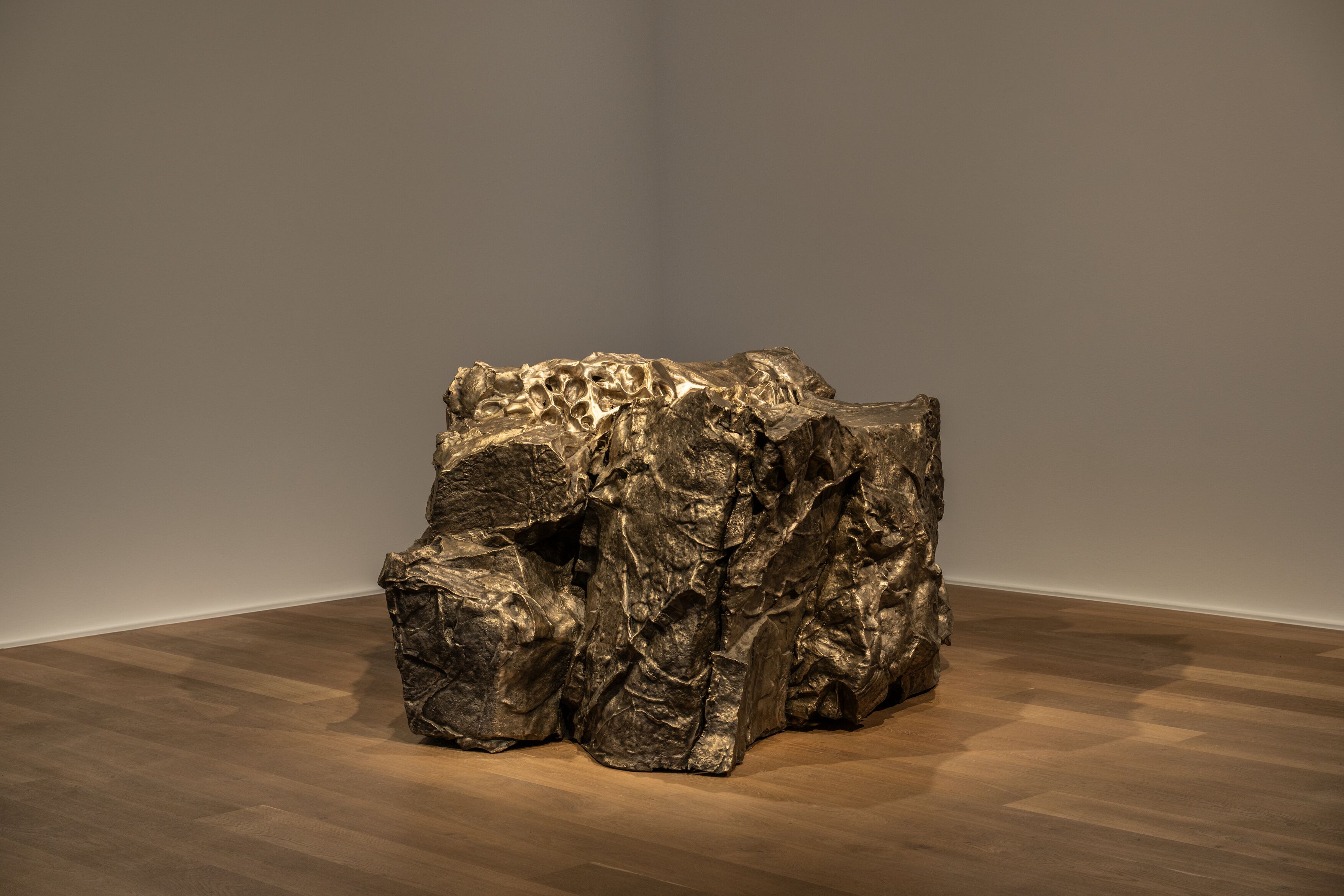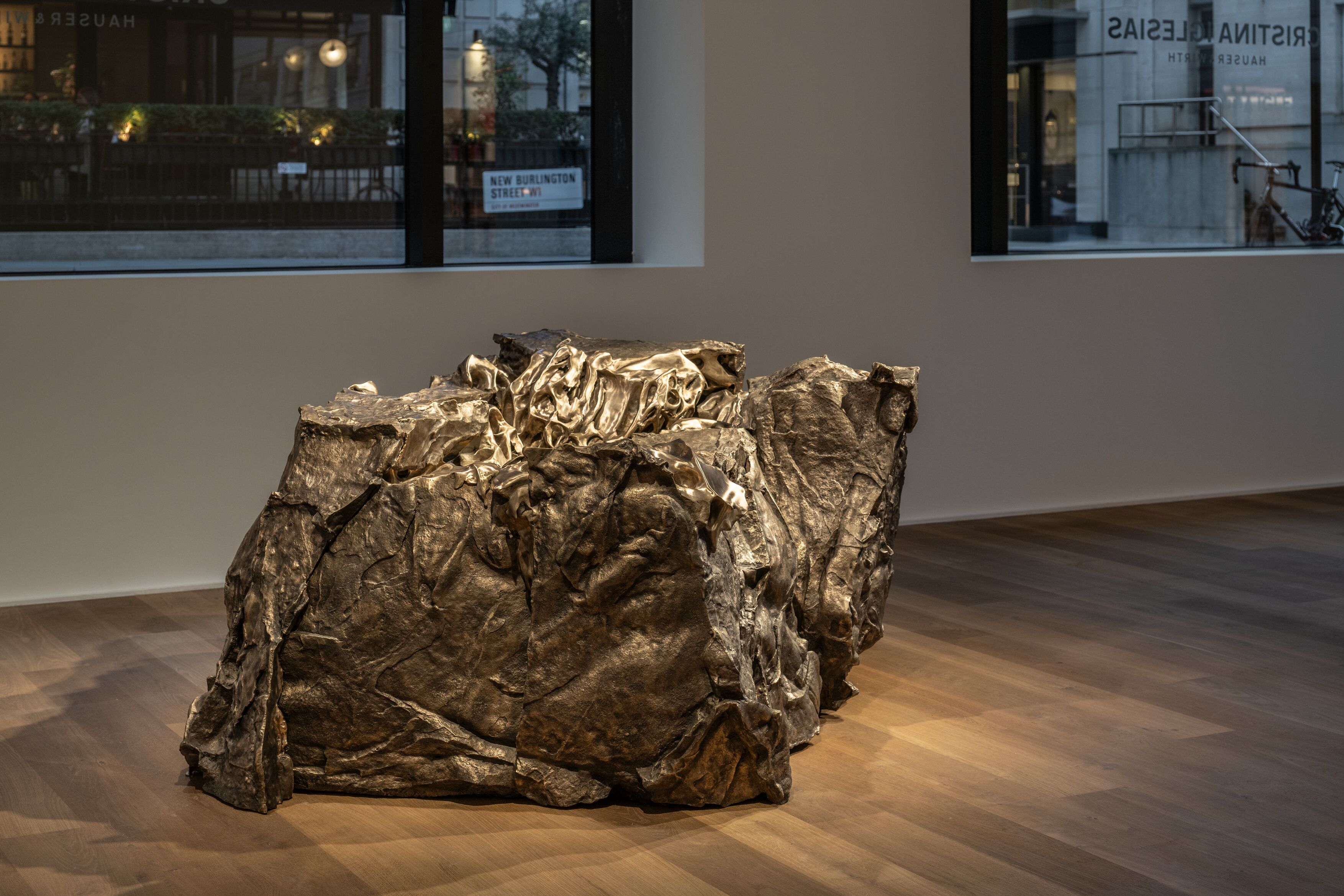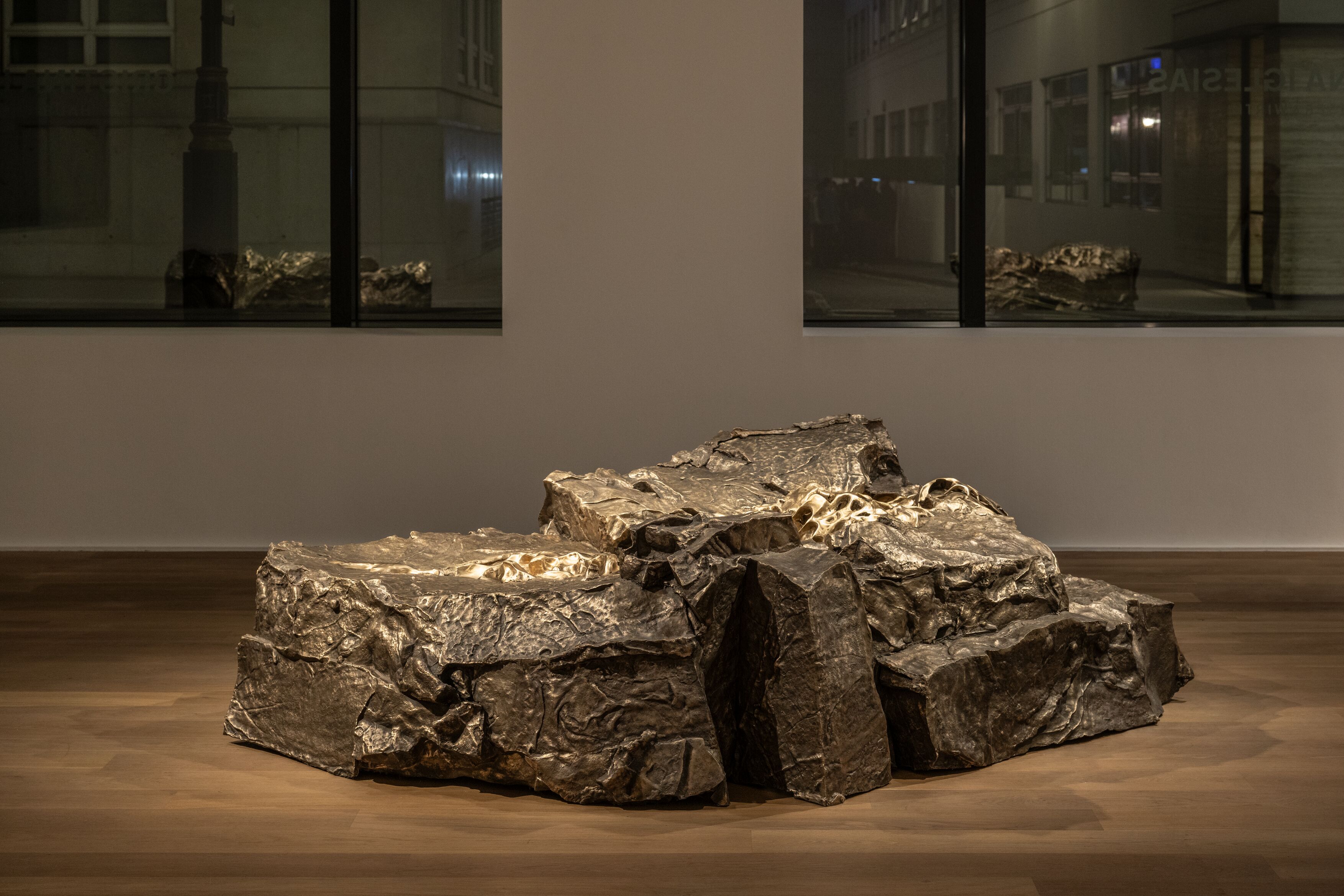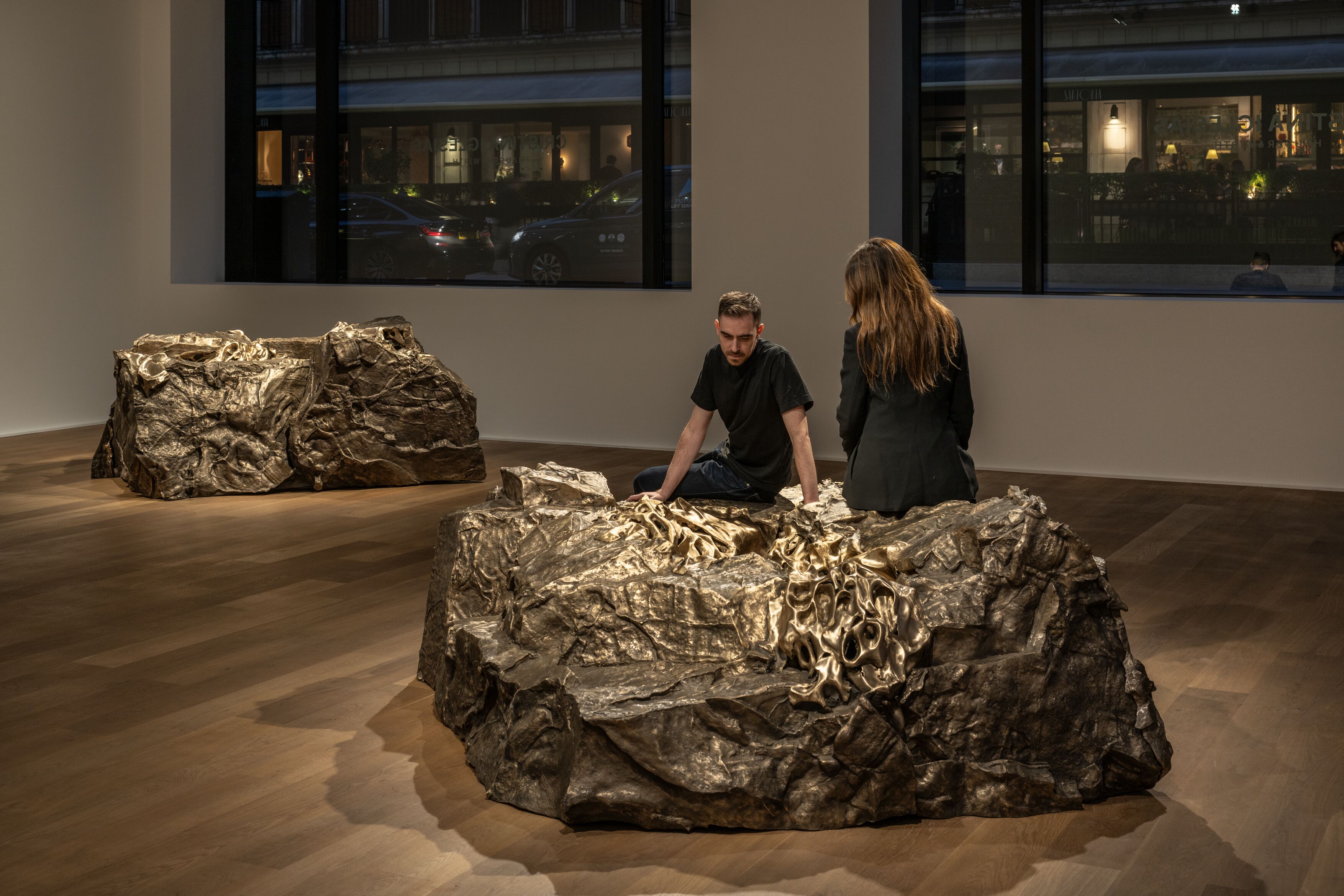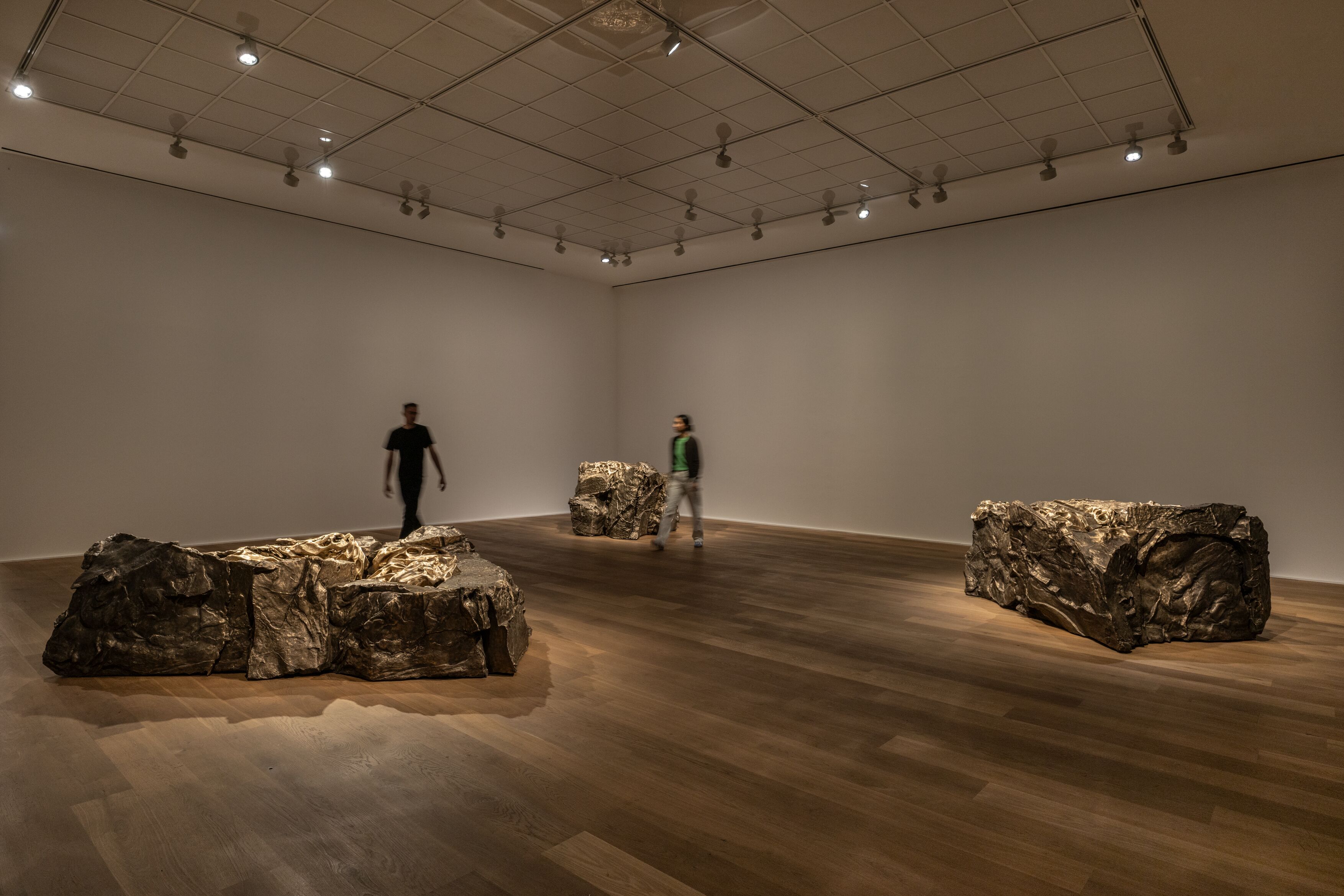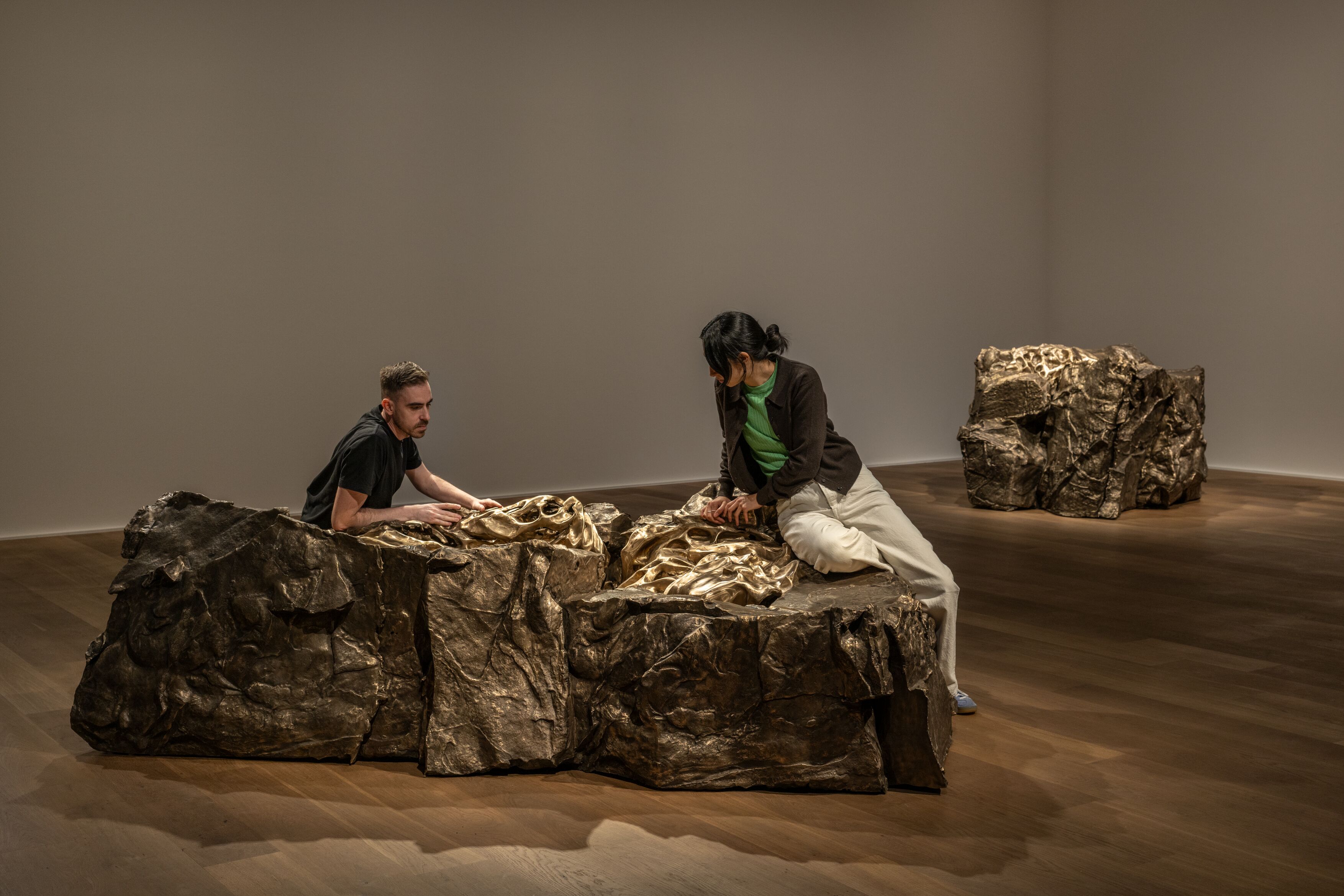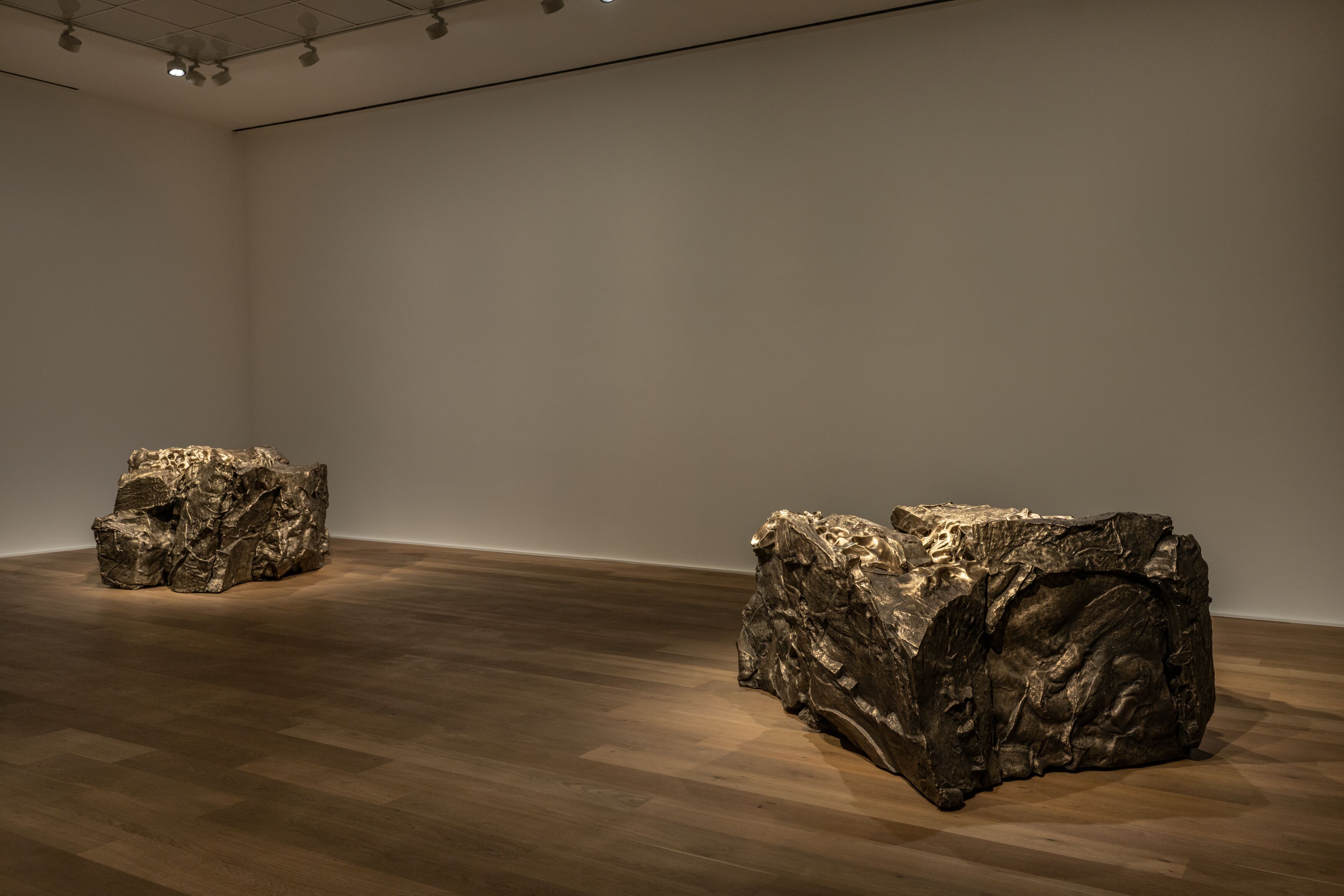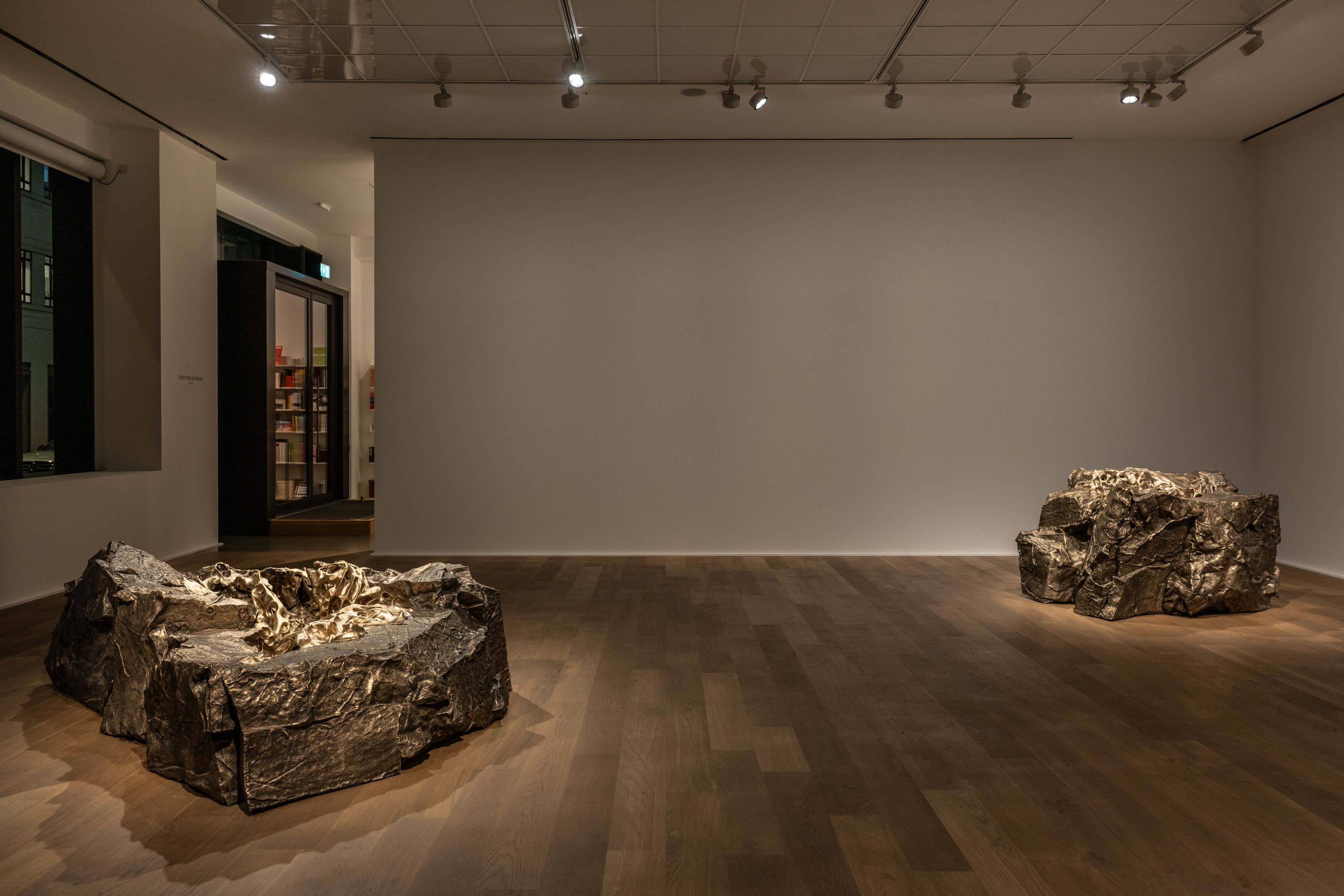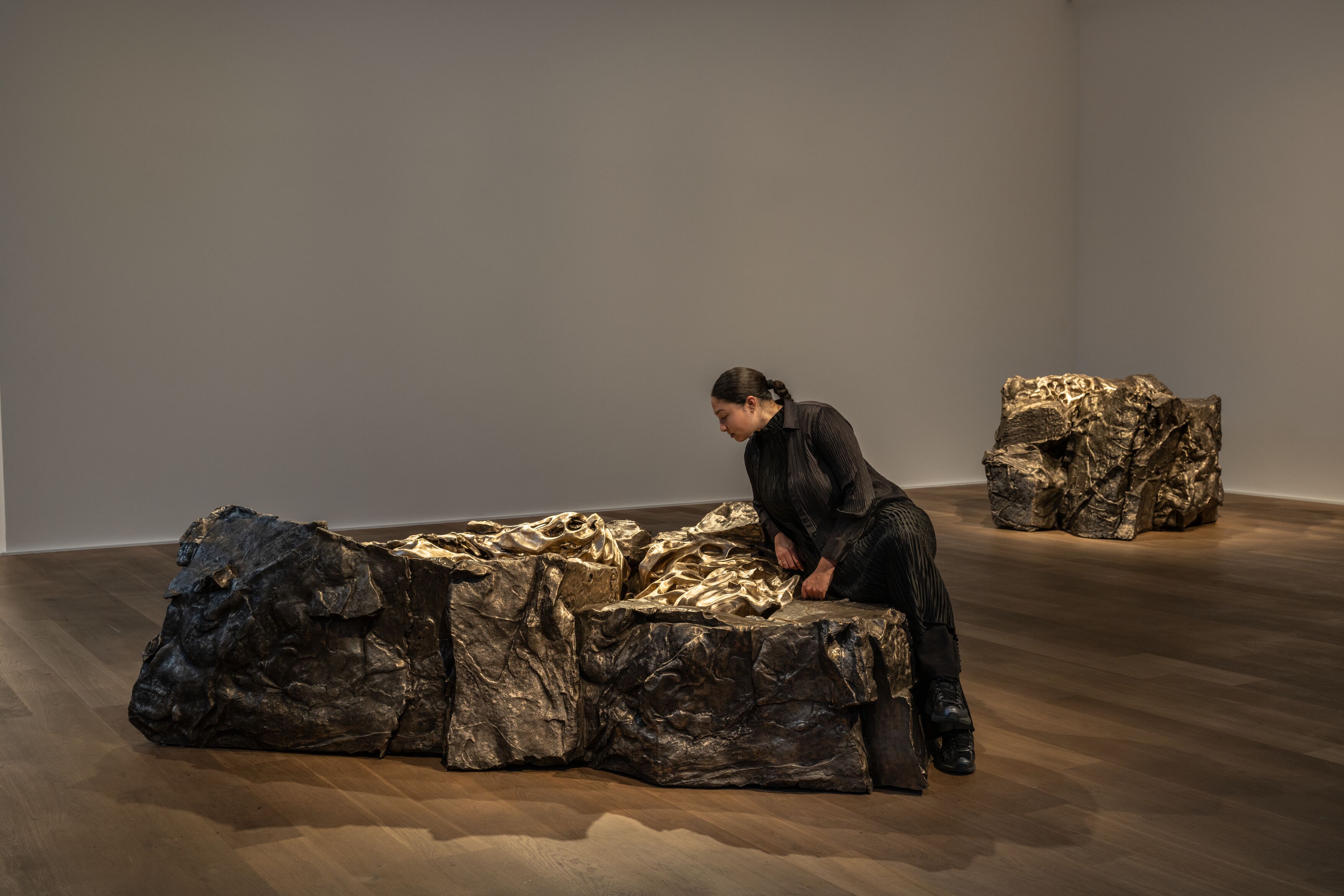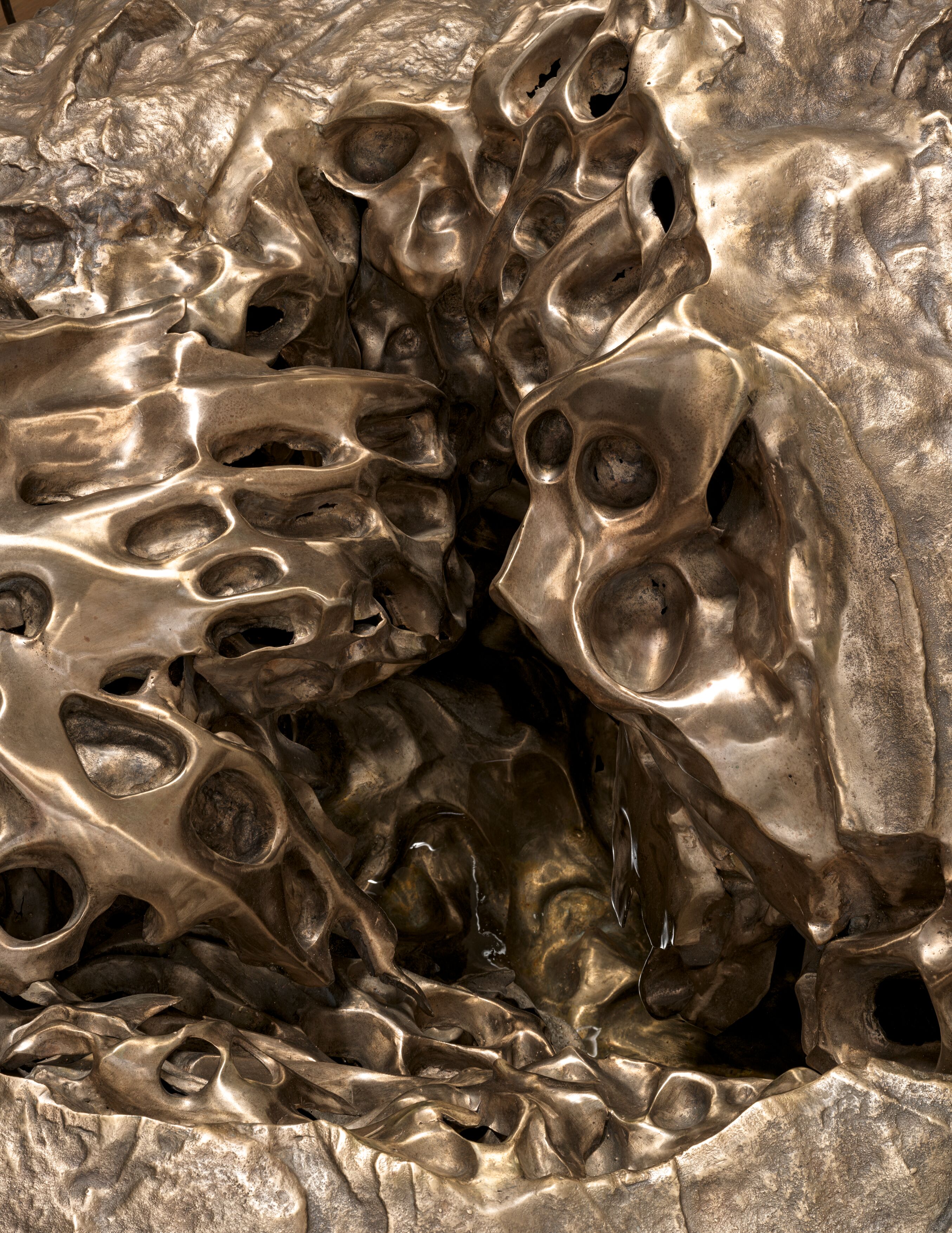
Cristina Iglesias
The Shore
14 October – 20 December 2025
London
This fall marks the first exhibition by Spanish artist Cristina Iglesias at Hauser & Wirth since joining the gallery. Iglesias is known for her unique sculptural vocabulary developed over four decades, creating immersive and experiential environments that reference and unite architecture, literature, psychology, mechanics, natural elements and site-specific content. Combining the conventional matter of sculpture—familiar materials such as glass, steel, bronze—with non-traditional materials like water and sound, Iglesias has forged an extraordinary visual language that feels simultaneously unexpected and inevitable.
The exhibition features three newly created large-scale bronze works from the artist’s Littoral (Lunar Meteorite) series, part of her ongoing exploration of geological themes. The word ‘littoral’ refers to something relating to or situated along a coast or shore, or the region where the land meets the water. Remarking that ‘the geological time of our planet can be perceived in the coasts,’ Iglesias’ sculptures touch on ideas of memory. The artist also imparts an unearthly quality by referencing lunar meteorites, rocks originating from the Moon that subsequently land on Earth. Each of the bronzes on view have a rock-like luster and unique porous form, their meteorite appearance symbolizing the collision of outer space and Earth.
Fusing the manmade with the organic, Iglesias’ use of water establishes further connections to geological processes. Water has featured as a significant element in Iglesias’ practice since the early 2000s, fundamental to large-scale installations such as ‘Tres Aguas’ (2014) in Toledo, Spain; ‘Forgotten Streams’ (2017) for the Bloomberg headquarters in London; and ‘Hondalea’ (2020 – 2021), a monumental work located within an excavated lighthouse on the island of Santa Clara off San Sebastian, Spain.
In the works on view, concealed hydraulic mechanisms enable the water to manifest from an invisible source, resulting in works that are at once natural and artificial, familiar and alien. The artist’s use of water generates a sense of time for viewers, its ebb and flow making the passage of time visible. Iglesias is interested in all its characteristics, from its sound to reflections. In drawing on the multiple histories and roles of water, Iglesias harnesses its flow and ripples to explore notions of memory and the past.
Installation Views
1 / 5
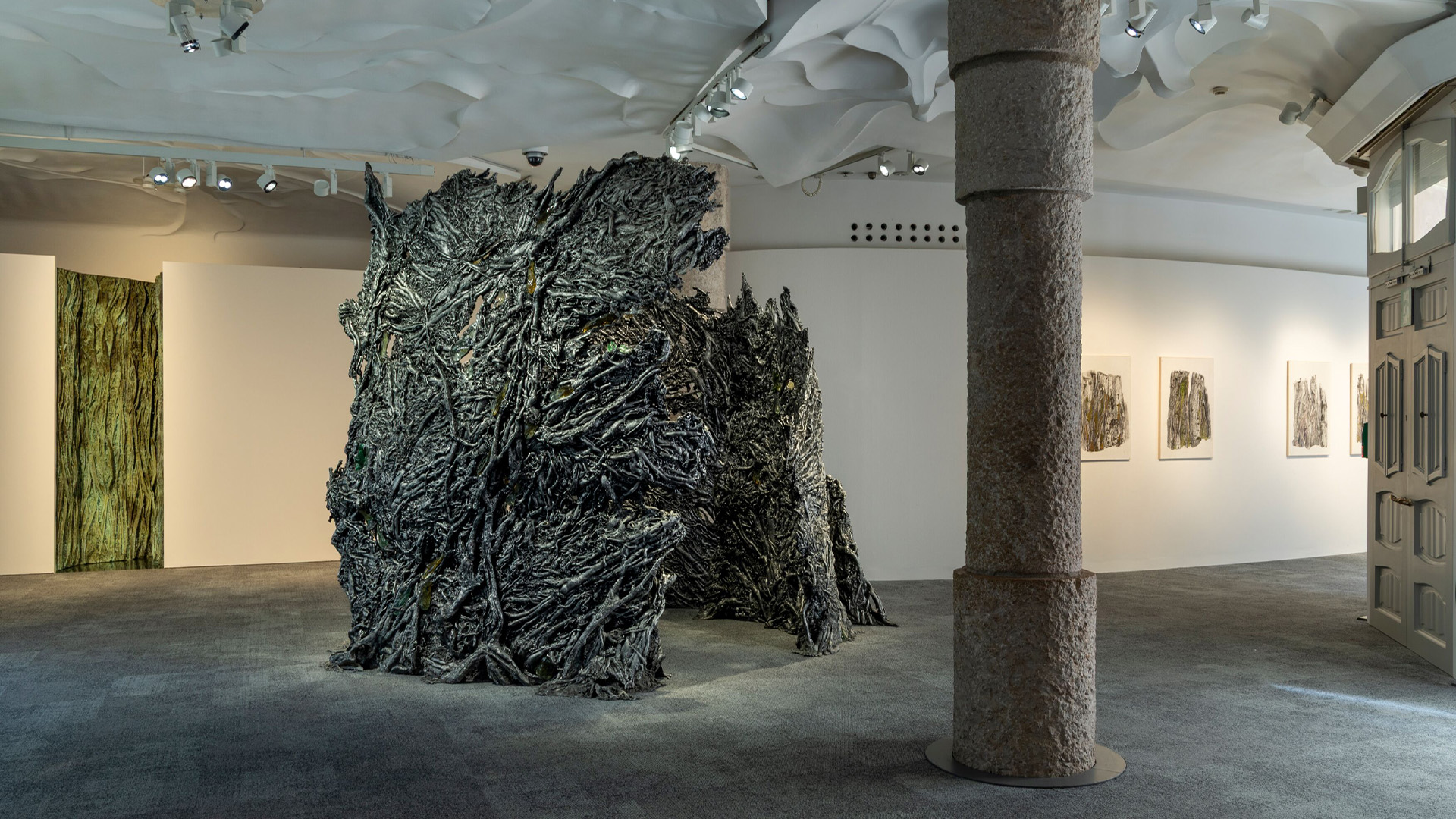
Cristina Iglesias: Passages
Coinciding with her London debut at Hauser & Wirth, Cristina Iglesias’ solo exhibition, ‘Passages,’ is on view at Fundació Catalunya La Pedrera in Barcelona, Spain through 25 January 2026. Curated by James Lingwood, the exhibition presents 40 works from 2002 to 2025, charting a dynamic journey through the fluid spaces of Antoni Gaudí’s architecture and exploring the interplay of open and closed forms that define Iglesias’ practice.
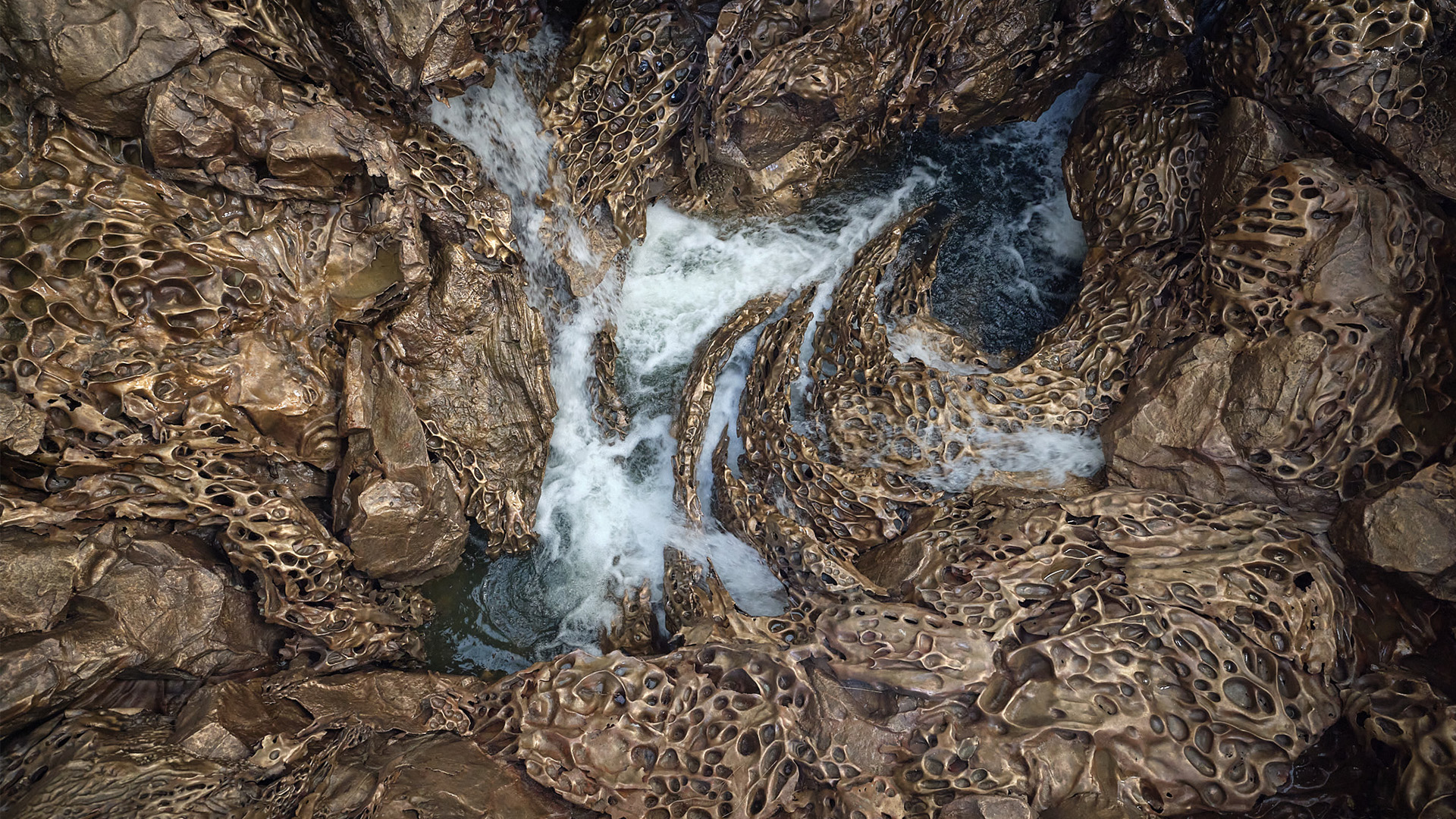
Cristina Iglesias: Hondalea
Inside the Lighthouse of Santa Clara Island in San Sebastián, Spain, Cristina Iglesias has created ‘Hondalea (Marine Abyss),’ a permanent installation excavated within the hollowed-out structure itself. Incorporating the peculiar geology of the Basque coast and the wild waters of the ocean that surround the island, the work transforms an iconic place of the region into a space for reflection and communication with the city and the sea.
Related Content
About the Artist
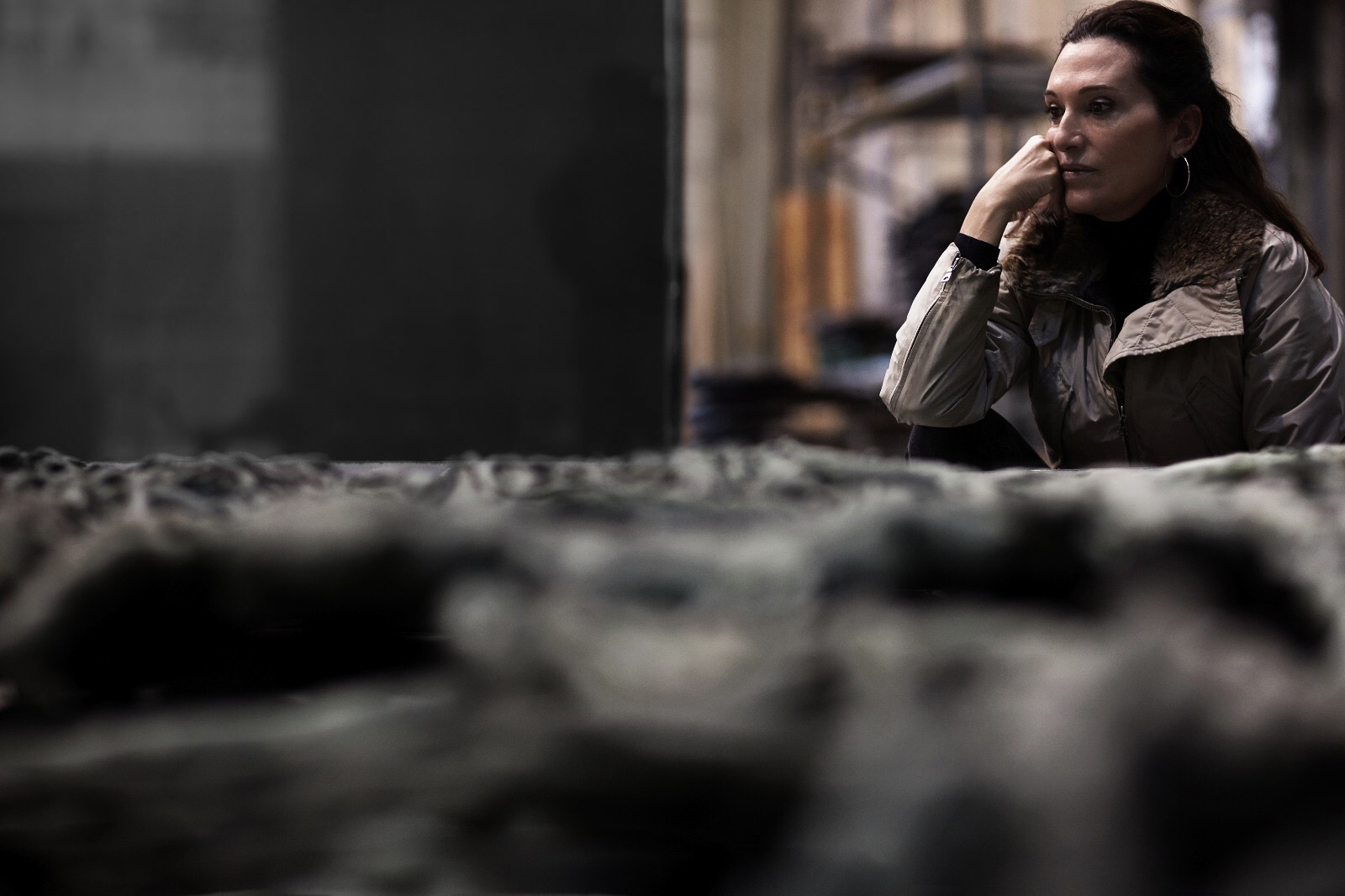
Cristina Iglesias
Over more than four decades, Cristina Iglesias (b. 1956, Donostia-San Sebastián, Spain) has defined a unique sculptural vocabulary, creating immersive and experiential environments that reference and unite architecture, literature, psychology, mechanics, natural elements and site-specific content. Guided by a profound cultural and historical sensitivity, as well as a deep concern for the natural world, Iglesias’ works poetically redefine the viewer’s relationship to time and place.
Iglesias pursued a degree in chemical sciences at the University of the Basque Country, before studying ceramics and drawing in Barcelona. She then continued her studies at Chelsea School of Art, moving to London in 1980. This interdisciplinary approach and her interest in experimentation laid the foundations for her art, ‘Drawing and working with clay was always, and still is, a way of thinking, but I was also very interested in science, particularly the laboratory part of it, the exploration,’ Iglesias says.
Iglesias returned to Spain from the UK in the early 1980s, where she developed a distinctive sculptural language of quasi-architectural forms—walls, pavilions, archways, canopies, ceilings—that carved out precarious enclosures and shelters in dialogue with the exhibition space. Using conventional materials such as iron, aluminum and cement in combination with alabaster, glass and textiles, Iglesias’ sculptures from this period are at once objects and places, experimenting with lightness, perforation and translucency to open up spaces in a way that shifts perception of the environments they inhabit.
Over the course of the 1990s, Iglesias’ practice continued to evolve, fusing natural textures cast from vegetation—including eucalyptus and bamboo—with architectural forms to create the opaque chambers and screens of her ‘Vegetation Rooms’. In 1993, she represented Spain at the Venice Biennale for a second time showing alongside Antoni Tàpies. She was appointed Professor of Sculpture at the Akademie der Bildenden Künste in Munich, Germany in 1995. She also created her first outdoor piece, an installation on the remote island of Moskenes in northern Norway, and realized her first architectural collaboration, a commission from Belgian architects Paul Robbrecht and Hilde Daem. This initiated an ongoing partnership that would later result in her highly acclaimed public work ‘Deep Fountain’ (1997 – 2006).
Following this, Iglesias’ focus shifted from the creation of architecture within rooms to the construction of rooms themselves. Works for public sites intervene in urban and non-urban environments to create gathering places that disrupt the fabric of the everyday.
In 2010 the artist created ‘Estancias Sumergidas’ (2010), three diaphanous pavilions, constructed from latticed concrete walls made up of letterforms, installed on the sea floor of a nature reserve in Baja California. Water is also fundamental to large-scale installations such as ‘Tres Aguas’ (2014) in Toledo, Spain; ‘Forgotten Streams’ (2017) for the Bloomberg headquarters in London and ‘Hondalea’ (2020 – 2021), a monumental work located within an excavated lighthouse on the island of Santa Clara, Spain.
Iglesias’ installations redefine perceptions of architectural and natural spaces while engaging deeply with the history of place. Today, she continues to pursue concerns with the subterranean and the slow time of the organic and geological world. Recent installations such as ‘Landscape and Memory’ (2022) in New York’s Madison Square Park unearth the natural and cultural histories of built urban environments, uncovering a fragile world of forgotten waterways, hidden roots and vegetation, with these ideas of phreatic spaces and natural growth echoed in the artist’s sculptural production.
Iglesias’ work has been presented in more than 60 solo and group exhibitions around the world. She has created major public art commissions for Antwerp, Belgium; Baja California, Mexico; Bloomberg Headquarters, London; Instituto Inhotim, Brazil; Madison Square Park, New York NY; Museo del Prado, Madrid; Museum of Fine Arts, Houston TX; Toledo, Spain; Santa Clara Island, San Sebastián, Spain; Royal Academy of the Arts, London and more. She has represented Spain at the Venice Biennale (1986, 1993), and participated in the Biennale of Sydney (1990, 2012), the Taipei Biennial (2003), the Carnegie International (2003), the SITE Sante Fe Biennial (2006) and the Folkestone Triennial (2011).
The prominent public collections which have holdings of Iglesias’ work throughout the world include the Centre Georges Pompidou, France; Fundação Serralves, Portugal; Institut Valencià d’Art Modern (VAM), Spain; Kunsthalle Bern, Switzerland; Museo de Arte Contemporáneo de Barcelona (MACBA), Spain; Museo Guggenheim Bilbao, Spain; Hirshhorn Museum, Washington DC; Solomon R. Guggenheim Museum, New York NY; Museum of Modern Art, New York NY; and Tate Modern, UK. She is the recipient of the Sorolla Medal from the Hispanic Society in New York (2024); Royal Academy Architecture Prize (2020); National Graphic Arts Award Spain (2019); Grosse Kunstpreis Berlin (2012); and Spain’s National Visual Arts Prize (1999), among others.
Current Exhibitions
1 / 12
